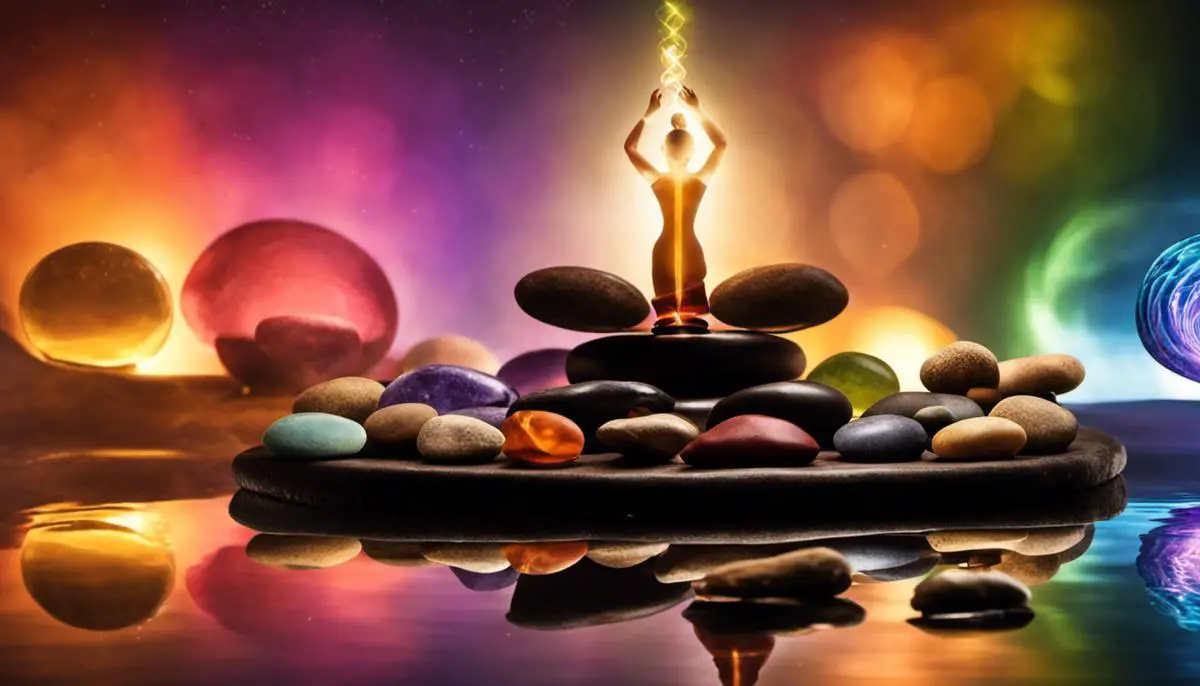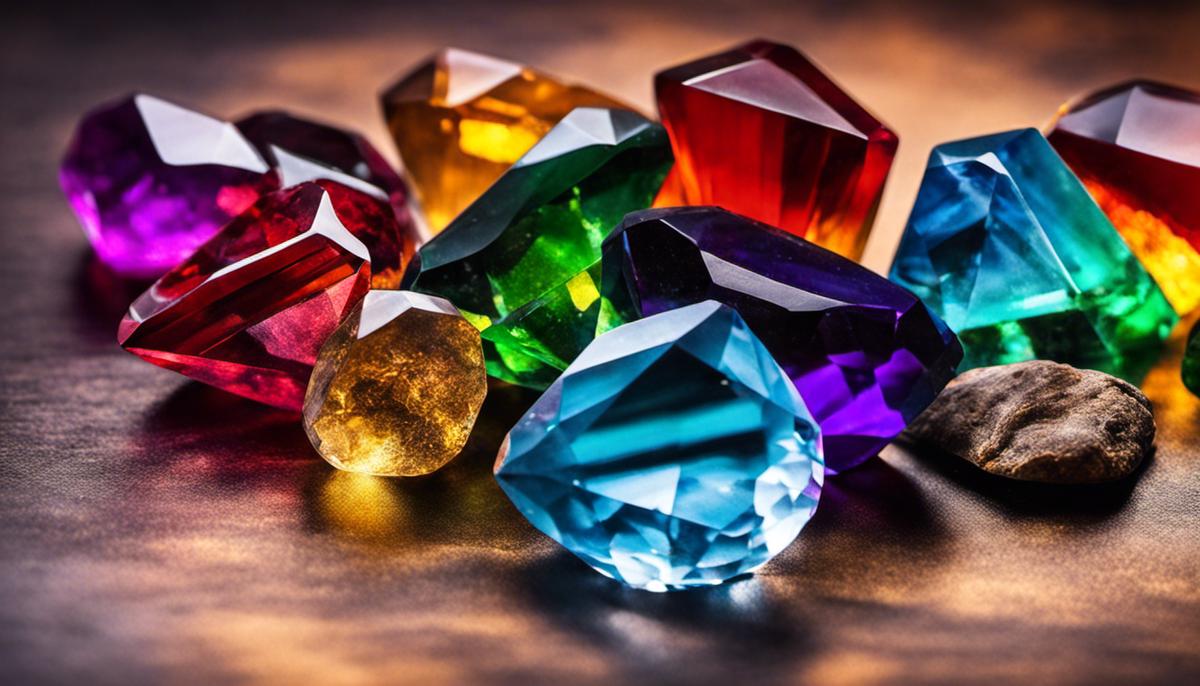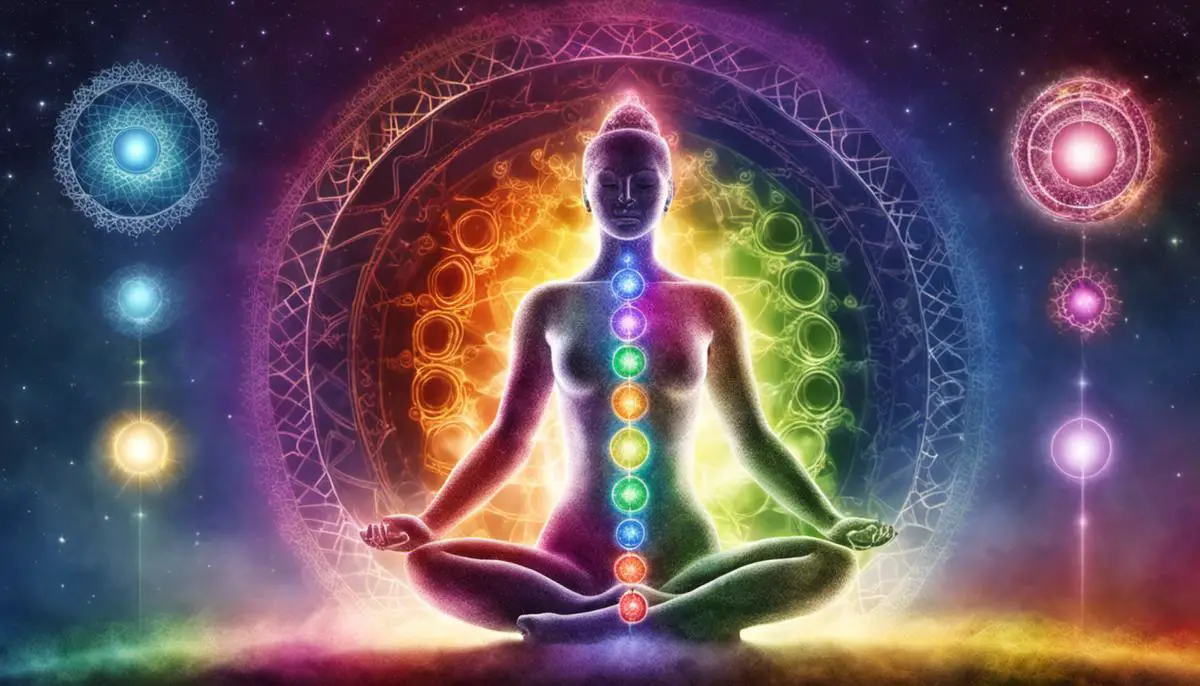In the mystical realm of energy healing, Chakras hold a monumental position, acting as pivotal points of energy distribution in our body. Considered the anatomy of our spiritual persona, these spinning wheels of energy are decisive in maintaining our physical, emotional, and psychological balance. In this comprehensive exploration, we delve into the rich tapestry of Chakras, studying their locations, significance, and the impacts they exert on our overall health. From identifying the symptoms of an unbalanced chakra to the various techniques employed in their rebalancing, this work aims to equip the enthusiasts with a holistic understanding and practical knowledge of chakra balancing.
Understanding Chakras
Understanding Chakras
Chakras are energy centers located throughout the body that form an integral part of your physical, mental, and spiritual well-being. Picture them as spinning wheels of energy, cascading like a spiritual waterfall from the crown of your head to the base of your spine. Envisioned in ancient Eastern traditions, these unseen wheels are more than just metaphysical concepts – they’re epicenters of life-force or pranic energy.The Seven Main Chakras
The seven main chakras are aligned along the spine, each correlating to a specific area of your body, from the root chakra at the base of the spine to the crown chakra at the top of your head. Let’s map this spiritual highway.- Root Chakra or Muladhara: In conjunction with our primal instincts, this chakra is the grounding force that allows us to connect to the earth’s energies and enhance our survival instincts.
- Sacral Chakra or Svadhisthana: Situated beneath the navel, this chakra is linked with creativity, desire, and emotion. Think of it as the bustling headquarters of your passion, creativity, and joy.
- Solar Plexus Chakra or Manipura: Positioned around the stomach area, this chakra is the core of our personality, identity, and ego.
- Heart Chakra or Anahata: Nestled near the heart area, it bridges the gap between the physical and spiritual chakras. It’s the love hub, where compassion, kindness, and harmonious relationships reign.
- Throat Chakra or Vishuddha: Residing in the throat, it helms our ability to communicate, express, and speak our truth.
- Third Eye Chakra or Ajna: Centered on our forehead, it’s our intuition’s command center. It’s a spiritual radar, responding to our inner wisdom and discernment.
- Crown Chakra or Sahasrara: At the top of the head, it’s our direct line to enlightened spirituality, wisdom, and cosmic consciousness.
Blocked or Unbalanced Chakras
Chakras, similar to any physical system, can become blocked or unbalanced. Imagine a hiccup in your spiritual WiFi connection, leading to a drop in the strength of your energy signals. These blockages typically surface from emotional upset such as stress, fear, or anger. This can manifest physically through illness or discomfort and mentally through anxiety or emotional imbalance.An unbalanced Root Chakra might leave you feeling insecure and anxious, a blocked Throat Chakra could rob you of your voice, making communications difficult. Similarly, a stagnant Third Eye Chakra can fog your intuition.
Chakra Balancing
By balancing your chakras, you contribute to the restoration of a harmonious energy flow within your chakra system—the result is a healthier physical, mental, and spiritual state of being. The specific techniques utilized in chakra balancing can be diverse, such appointments for yoga or meditation, massages, using healing crystals, or even applying essential oils. These procedures are tailored as per the unique nature of the energy centers in question. You’re encouraged to approach chakra balancing similarly to tuning a musical instrument— with patience and soft handling. Of importance is the realization that achieving harmonious vibrations isn’t all about the melody; it entails a finely mastered orchestration of life’s energetic resonances.

Chakra Imbalances Symptoms and Diagnosis
Getting Acquainted with the Chakra System
Before you delve into the signs and diagnostics of chakra imbalances, it’s essential to familiarize yourself with the rudimentary concepts of the chakra system. Chakras are energy hubs inside your body, regulating everything from how your organs function, your immunity to the management of your emotional state. These chakras, totaling to seven in number, are distributed from the base of your spine all the way to the top of your head.
-

Celestial Soul Eco-Friendly Tote Bag
$18.50 Select options This product has multiple variants. The options may be chosen on the product page -

Celestial Soul Women’s T-Shirt
Price range: $20.00 through $21.50 Select options This product has multiple variants. The options may be chosen on the product page
Recognizing the Symptoms of an Unbalanced Chakra
Recognizing the symptoms of an unbalanced chakra is your first step towards restoring balance. Each chakra corresponds to specific physical, emotional, and psychological aspects. For instance, if your root chakra is out of balance, you may feel unstable or insecure, or experience digestive problems. If your throat chakra is blocked, you might struggle with self-expression or have a sore throat.
Noticing these symptoms requires self-awareness and mindful observation. Are you experiencing recurring physical ailments like headaches or stomach upsets? Are you grappling with emotional issues such as anxiety or depression? Delve into your daily life’s details to clue into any persistent or unusual patterns that might indicate a chakra imbalance.
Self-Diagnosing Chakra Imbalances
Meditative self-reflection is a valuable tool for diagnosing chakra imbalances. When wandering into your meditation, take intentional moments to tune into your mind, body, and spirit. Do you hold tension in certain areas of your body? Do specific emotions repeatedly surface? Threading these observations together can illuminate potential chakra imbalances.
In addition, the use of tools such as pendulums can help confirm a chakra imbalance. Hold a pendulum above each chakra and observe its movement. Circular motions usually indicate a balanced chakra, while a stationary or erratic pendulum swing might suggest an imbalance.
Understanding Chakra Disruptions and Symptoms
The diverse aspects of one’s being are governed by different chakras, so distinct symptoms emerge when these energy centers go out of balance.
For example, an unsettled root (1st) chakra can trigger feelings of insecurity, anxiety, and instability, often resulting in physical issues such as constipation, lower back pain, and eating disorders.
An unbalanced sacral (2nd) chakra might lead to emotional turbulence, creativity barriers, or intimacy challenges. It can also manifest as lower back pain, irregular menstrual cycles, or urinary tract issues physically.
Dysfunctions in the solar plexus (3rd) chakra can catalyze a lack of confidence or difficulty making decisions, morphing into physical manifestations like digestive and liver problems.
Heart (4th) chakra imbalance could result in emotional detachment, relationship difficulty, and empathy deficit. It’s physical signs might include heart disorders and weakened immune response.
Throat (5th) chakra imbalance often presents as communication hurdles and problems with self-expression. It may also cause recurrent throat infections or dental issues.
A disordered third eye (6th) chakra can obscure clear thinking and decision-making processes, and cause eye issues, headaches, and nightmares.
A crown (7th) chakra imbalance could lead to a lack of spiritual connection and learning difficulties, which can also manifest as headaches, neurologic disorders, and light sensitivity.
Recognizing these signs and understanding each chakra’s unique characteristics can guide you towards diagnosing and rectifying these energy imbalances. Remember, this endeavor is a journey that requires patience and an appreciation for the course of natural progression.

Techniques for Balancing Chakras
Harmonizing Chakras through Meditation and Breathwork
Meditation accompanied by focused breathwork can serve as impactful tools for harmonizing your chakras. By directing your attention towards your breathing patterns and mentally following your body’s energy flow, you can actively participate in rebalancing your chakras. Each chakra correlates to a specific body part or physiological function, so when meditating, envisioning each chakra can contribute to stimulating and recalibrating that energy center. For instance, when working on the heart chakra, center your thoughts around feelings of love and compassion. The power of meditation and breathwork extends from the root chakra situated at the base of your spine, all the way to your crown chakra located at the apex of your head.
Yoga Poses
Yoga is another effective technique for chakra balancing. Each yoga pose carries a specific benefit, often targeting one or more chakras. For instance, the downward-facing dog pose is known to stimulate the throat chakra, promoting communication and self-expression. On the other hand, the warrior pose can stimulate the solar plexus chakra, enhancing self-esteem and personal power. Make a routine that covers a range of poses targeting all seven chakras for effective chakra balancing.
Tai Chi
Tai chi, a form of martial arts, also plays a significant role in chakra balancing. The slow, intentional movements of tai chi aid in harmonizing the mind and body, thus encouraging the energy flow through the chakras. With the guidance of a skilled practitioner, special techniques such as “Embracing the Tree” can be learned to open and balance specific chakras.
Reiki Healing
Reiki is a unique form of energy healing that helps align the chakras. Using hands-on or hands-off techniques, reiki practitioners leverage the universal energy (“rei”) to harmonize the life force energy (“ki”) within us. This energy can help unblock and balance the chakras.
Healing Stones and Crystals
Healing stones and crystals have been trusted allies in chakra balancing for centuries. Just as each chakra is associated with a specific area of the body or aspect of life, they are also associated with specific stones. Amethyst, for example, is believed to stimulate the crown chakra and promote spiritual growth. Placing appropriate stones on each chakra while lying in a meditative state can stimulate and balance the chakras.
Aromatherapy
Aromatherapy, involving the use of essential oils, can also help balance the chakras. Different oils are thought to correspond with individual chakras—like lavender for the crown chakra and rosemary for the throat. Using these oils in a diffuser, in a bath or as part of a massage can help to stimulate these chakras and bring about balance.
Color Therapy
Color therapy is the use of color in various forms to balance the chakras. Each chakra is associated with a certain color, and by visualizing these colors or surrounding yourself with them, you can stimulate and balance the chakras. For example, the heart chakra is associated with green; thus, picturing a green glow in your chest area can help balance the heart chakra.
It’s important to remember that cultivating valuable chakra balancing strategies involves a significant investment of time, ongoing practice, and a great deal of patience. Since each of us is entirely unique, what may be effective for one person could be less beneficial for another. It’s therefore critical to discover the methods that truly align with your personal energy and to build a customised chakra balancing routine that suits you.

Maintaining Balanced Chakras
Implementing Dietary Adjustments for Effective Chakra Balancing
Effective chakra alignment begins from within, which necessitates careful consideration of your diet. It’s believed that certain foods correspond directly with various chakras. For instance, root vegetables such as carrots and sweet potatoes are thought to have a notable impact on stimulating the Root Chakra. Similarly, staying hydrated and incorporating more fruits into your diet is linked with maintaining a balanced Sacral Chakra. By consciously choosing what you ingest, you could significantly enhance the health and balance of your chakras.
Mindfulness and Meditation
Remember, chakra maintenance isn’t a one and done burst of enlightenment – it’s an ongoing journey. Just as you would work out to keep your physical body in shape, regular practices like meditation and mindfulness help keep your chakras balanced. Frequent mindfulness meditation helps in recognizing the negative energy that might be seeping in and disrupting your balance, and it offers a tool by calming and refocusing your energy back to its center.
Utilization of Crystals for Chakra Health
An additional practice includes using crystals to maintain balanced chakras. Each crystal holds a unique energy vibration that aligns with specific chakras. For example, amethyst synchronizes with the Crown Chakra and helps in balancing spiritual awareness, while Citrine aids the Solar Plexus Chakra by instilling self-confidence and clear communication. By choosing the correct crystals and keeping them near, you can harness their energy to support your chakra balance.
Yoga and Chakra Balancing
Yoga is another helpful way of maintaining your chakras’ balance. Various poses simultaneously ground your energy and align your chakras. Particular poses cater to specific chakras—like the Mountain Pose for the Root Chakra or the Camel Pose for the Throat Chakra. Regular yoga practice will ensure your chakras’ stability.
Avoiding Negative Energy
The key to maintaining a balanced chakra system lies in avoiding negative energy. This could come from multiple sources—upsetting news, toxic relationships, or a disruptive work environment. Practice setting boundaries and distancing yourself from these negativity sources. This might mean limiting your news consumption, discussing issues within relationships, or seeking a calm, quiet space to unwind from a stressful day at work.
Tarot Cards and Maintaining Chakra Balance
Tarot cards can also be a tool in maintaining chakra balance. Certain decks are geared specifically towards this theme, with cards representing the seven primary chakras’ energy signature. By routinely assessing the state of each chakra via tarot, you can get a grasp of what might be out of balance and needs attention.
By adopting these various daily practices and lifestyle changes, you can strive to ensure your chakras’ health and maintain the balance you’ve achieved.

Once the delicate balance of chakras is achieved, the journey to maintaining it commences. Therefore, equipping oneself with sustainable lifestyle choices and proactive measures is of paramount importance in preserving the harmony of these energy centers. The essence of balanced chakras encapsulates a deeply enhanced existence—a life brimming with vitality, emotional equilibrium, and a tranquil spirit. Adapting to conscious dietary choices, habitual mindfulness practices, and shielding oneself from negative energies can pave the way for a nourishing and balanced life. Ultimately, our chakras stand as vital components in our journey of self-discovery, personal growth, and spiritual awakening.

